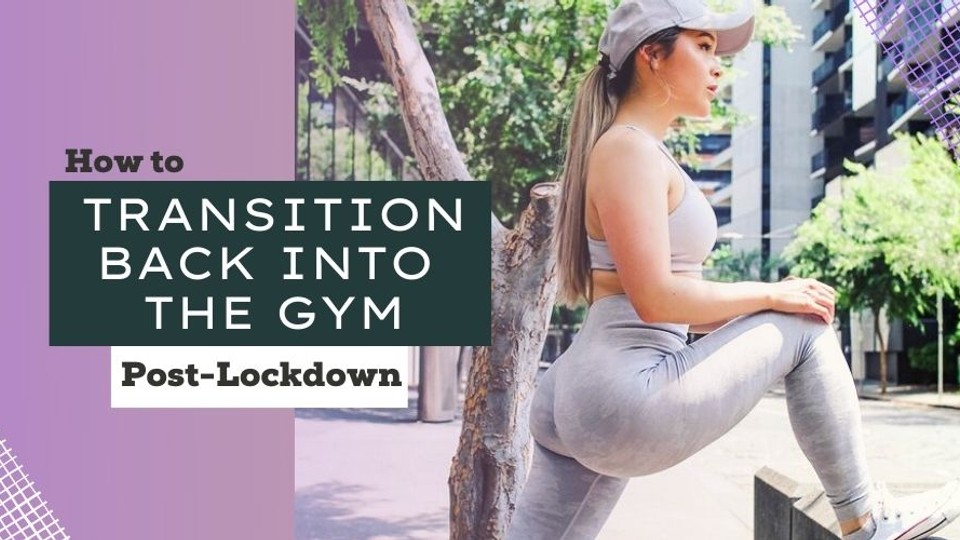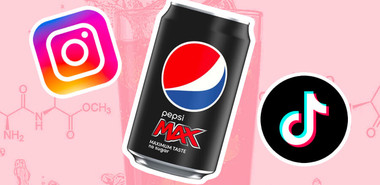
The coronavirus pandemic has kept us drifting in lockdown for what felt like an eternity. But, as restrictions gradually ease, gym-goers are buzzing with excitement, eagerly anticipating the moment they get to step foot back into the gym.
Undeniably, it’s tempting to strut back into the gym, brimming with fresh enthusiasm and ready for a full-fledged workout. However, disaster can strike, and you don’t want to sustain injuries that force you to stay home for weeks.
Maybe you sit on the other end of the spectrum. Quarantine has robbed you of your appetite to achieve your fitness goals. Now, you’re hesitant and uncertain about how to steer yourself back on track.
View this post on Instagram
Whether or not you stuck to your workout routine during the lockdown, your body still requires time to adjust and adapt. Here are seven tips that may assist you in transitioning from home workouts (or no workouts) back into the gym!
1. Warm-up 🚶♀️
You hear this all the time and there’s a good reason for it!
Plus, warming up will lessen your risk of injury as it reduces the strain on your muscles during higher-intensity exercises. It also prepares you mentally for your exercise routine so you can focus better on your coordination, balance, and technique.
Jogging on the spot, walking, dynamic stretching, or performing your planned workout routine at a slower pace are splendid ways to warm up.
So before you dart over to your exercise routine, give your body ample time to ease into the groove of working out!
2. Go light 🙆♀️
When you’re back, it’s crucial to put genuine effort into going lighter than before. Leave your ego at the door. You may no longer have the agility, strength, or fitness level you did before, and that’s okay.
Say you may not be able to deadlift as heavy as before. Or maybe you need to take longer breaks in between sets.
Whatever it is, go light! Avoid overexerting your body to prevent injury.
Unsurprisingly, you may regard muscle soreness, or DOMS, after a grueling workout session as a positive sign of progress.
Before you push yourself into another overly demanding high-intensity workout, remember this. DOMS is an inconvenience and a performance inhibitor. They may be a warning sign that you’re heaving too much stress onto your muscle and tissues or that you lack proper warm-up.
3. Focus on technique 🏋️♂️
Quality tops quantity, hands down!
If you’re like me, you didn’t sell your kidneys to buy state-of-the-art gym equipment for the garage gym. As a result, most of us resorted to home workouts and makeshift accessories, dumbbells, and weights.
And now that we’re back, the equipment we used to know like the back of our hand feels strange and foreign. Plus, our movement and techniques are no longer as sharp and well-executed as before.
Admittedly, bragging about doing a hundred pushups sounds fun. Still, you may not be getting the best out of your fitness routine. So instead, divert your focus onto your form, technique, posture, and range of motion. Once you pin that down, you can start gradually upping your pace.
4. Cool-down 🧘♀️
Warm-ups and cool-downs are like the yin and yang of exercise. Both are essential for well-balanced and efficient workout routines, and that’s non-negotiable!
Perform a cool-down session by carrying out your workout routine but at a slower pace and with lessened intensity. Or you could try stretching and foam rolling to reduce muscle inflammation and tightness.
5. Optimize your nutrition 🌮
On training days, you may wish to optimize your protein intake. Doing so will deliver essential nutrients and amino acids to the muscle tissues that require them for repair and restoration.
Additionally, don’t shy away from carbs! They help to refuel your body’s glycogen stores (energy tank) after training sessions. Carbs are especially crucial if you exercise very often.
Last but not least, the essential fatty acids, omega-3 and omega-6, are not to be overlooked. These can directly impact your body’s ability to recover.
6. Pace yourself 🏃♂️
Rest days are as crucial as training days. Taking much-needed breaks allows your muscles time to repair and recover.
If you choose to work out intensively with no rest days in between, that enthusiasm is admirable. But unfortunately, you’re running the risk of burnout, muscle fatigue, and injury.
You may not require rest days for light cardio. On the flip side, bodyweight workouts or strength training may require you to get rest days by rotating your activities. Do it in such a way that allows that specific muscle group to repair and recover.
7. Don’t compare 🤳
With social media, comparison can quickly seep into our minds. As a result, we may unconsciously compare our progress with hundreds of posts online.
While fitness journeys on Instagram can spark inspiration, we have to be alert. One false step, and you may be feeling gloomy with your weight, fitness level, or progress after looking at everyone else’s.
And have you heard the saying, ‘Your biggest competitor is yourself?’ It’s true to a certain extent. In this case, though, it’s alright to accept that you’re not as powerful, fit, or athletic as your past self.
After all, you don’t want to end up with serious injuries or a crushed spirit after trying to break your previous records. Your mental health is as important as your physical health. And comparison can leave both in a trainwreck.
At the gym, safety comes first!
As important as it is to prevent physical injury, don’t forget to protect your health amidst the pandemic, too. Stick closely to the COVID-19 guidelines and regulations set by the gym.
With all these tips added to your arsenal, you’ll be back to your usual fit and form in due time!



